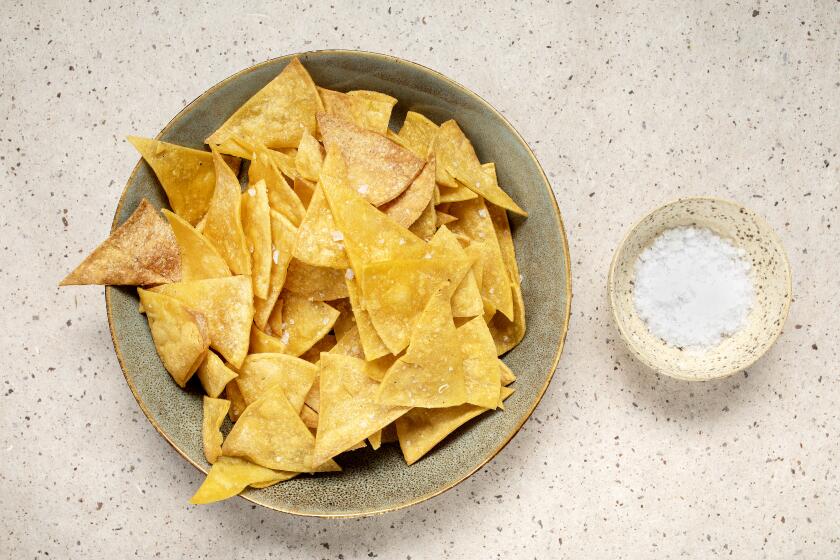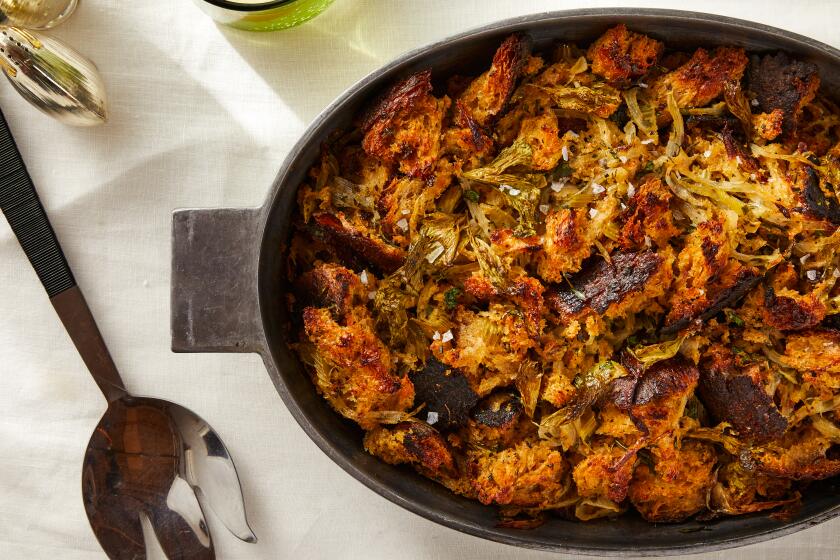English Muffin Bread

There’s never an occasion when I can’t find an excuse to pop something in the oven. And no one at my table--blood-related or otherwise--has ever said, “No, I couldn’t possibly have another fresh, hot crumpet.” Baking a my house is not just a sometime thing.
That’s especially true for breakfast. Bagels, brioches and bialys, croissants and crumpets--there are so many traditional breads you can happily make, bake and serve between the hours of dawn and noon.
Breakfast breads are traditional and comforting. There’s little need to reinvent the wheel or push the envelope; the old favorites have sufficed for years and will continue to do so.
Crumpets are a great example. A good crumpet is like a cross between a pancake and an English muffin, though it’s really a mistake to compare them to anything else--especially to store-bought crumpets. If you have never had a homemade crumpet, you’re in for a treat. It’s puffy, golden and moist but crusty.
Then there’s pain au chocolat, the favorite treat of millions of French schoolkids. My recipe is a shortcut version of the classic, but it’s still sweet and buttery, made from a very rich (but easy) sweet dough hiding a cache of chopped-up chocolate that melts just a touch during baking.
Sally Lunn Bread is an American (and English) classic much like a brioche. This buttery, slightly sweet loaf is wonderful whether it’s served fresh or toasted with butter and honey.
To listen to people from New York, it’s the only place where real bagels can be made, because you have to have New York City tap water. I disagree. This recipe gives resoundingly authentic-tasting bagels no matter whose water you use.
On the other hand, nothing beats a good biscuit. A combination of leaveners--yeast, baking powder and soda--makes these extra-light, and an overnight rise makes them ready to bake when you are. It’s traditional to keep a big batch of batter in the refrigerator so you can cut off and bake portions as required.
The one twist on tradition here is the English muffin bread. I first noticed it in a book by James Beard and was intrigued by the idea of fiddling with two leaveners, baking soda and yeast. It’s a triumph--a coarse and grainy loaf that combines English muffin texture and taste with a traditional quick loaf’s ease and toast-ability.
Best of all, nothing special is needed for these recipes--just the basic flour, yeast, butter and sugar. Add a hefty mug of coffee or a proper pot of tea and it’s cue reveille. Sound the chuck-wagon bell. Dig in.
In a large mixing bowl or bowl of an electric mixer, stir together yeast and warm water. Let stand a few minutes, then add milk, butter, sugar, honey and salt. Stir in dissolved baking soda. Fold in all-purpose, bread and whole wheat flours and stir to make a batter. Using mixer paddle or a wooden spoon, blend well, about 3 minutes.
Generously grease 2 (9x5-inch) loaf pans. Sprinkle with cornmeal. Divide batter equally between prepared pans. Cover with a plastic bag (allowing batter to rise but not stick to plastic). Let rise until doubled, about 30 to 40 minutes.
Bake at 375 degrees until loaves are brown and sound hollow when tapped, 40 to 50 minutes. Cool on a rack 10 minutes before turning out to cool completely.
Get our Cooking newsletter.
Your roundup of inspiring recipes and kitchen tricks.
You may occasionally receive promotional content from the Los Angeles Times.















